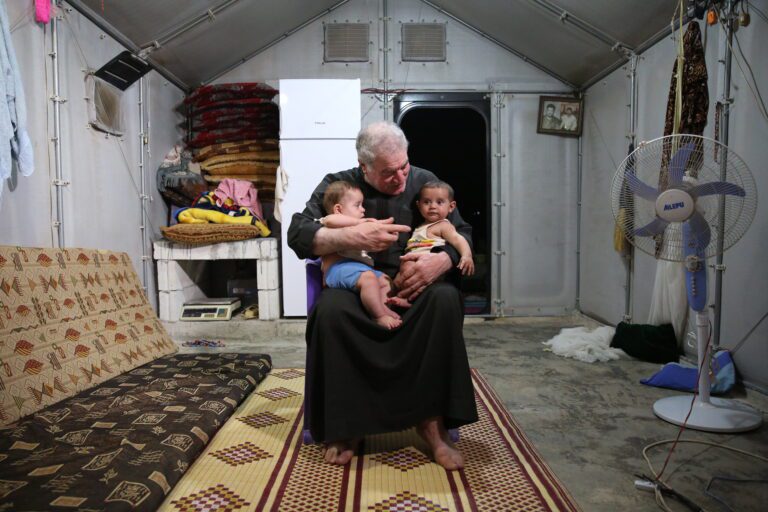Madrid, Spain: At the first Norman Foster Foundation’s Shelters Workshop supported by Holcim, the anticipated Shelters Public Debate between Norman Foster and Shigeru Ban took place on 8 June 2022. It is not so much a debate but more a call for solidarity between diverse stakeholders with the potential to effect meaningful change when collaborating on unique skills and areas of expertise.
Topics of localisation, systemic change and the meaning of safe and dignified shelters were highlights of the debate, framed first by the opening keynote delivered by Better Shelter Co-founder and Managing Director Johan Karlsson. Just two weeks before the event, UNHCR announced the staggering 100 million displaced people worldwide. Karlsson contrasted 100 million with his native Sweden, surpassed by population ten times over. When Karlsson started his career in humanitarian shelters, the figure was 42 million.
“Because of the trends we are seeing, the high needs that are growing, the funds that are not following, the long duration in protracted crises, it’s a huge task for us to resolve. Humanitarians, industrial designers like me, but also the architecture community like you here in this room today.”
Johan Karlsson
The evening’s second speaker, Elena Giral, comes from the European Commission and is the project manager for Emergency Shelter and Emergency Transport & Logistics. She brought her unique perspective, cultivated from an architectural background, and her current profession, coordinating humanitarian and civil protection response missions. Like many humanitarians, Giral’s commitment originated from watching an international crisis unfold in real time and from a distance. For her, it was the 2004 Indian Ocean earthquake and tsunami.
Instead of seeing shelter as an issue to be solved by design, Giral proposed reversing current practice: that shelter should put people first. She argues that shelter is not about the unit itself but instead how people access and live in it. This task needs to be attended to not only by architects or humanitarian responders but by both at once.
“Architects are not sufficiently prepared to understand the complexity of humanitarian settings, and emergency responders are not sufficiently prepared to understand the complexity of inhabiting a space. So we need to bridge that gap.”
Elena Giral

With no time wasted on introducing two architecture titans to a room filled with young architects, Karlsson moderated the first live conversation between Norman Foster and Shigeru Ban. Karlsson began with localisation, emphasizing using the term as a “buzzword”. In contrast, the reality is more challenging than it seems: local supply chains are broken by conflict, and the need for training local people consumes the limited time needed to implement the relief systems.
Outsourced prefabricated systems answer the need for temporary housing within a rapid deployment time budget. Ban questions the disposability of the shelter in a world of increasing protracted crises. True localisation can be achieved if the shelter is seen as more precious than a technical system intended for a single emergency purpose, wherein the resident has the autonomy to construct and maintain their own property. Foster proposed that the answer exceeds the height of a shelter roof, where a gap in political will is in dire need of filling. It begins with education, the very purpose of the Shelters Workshop.
Safety and dignity are frequently cited in humanitarian literature, not least in the plethora of guidelines, standards and report documents. To conclude the conversation, Karlsson asked both Foster and Ban what they view to be a safe and dignified shelter:
“(A safe and dignified shelter) would be one that would give me privacy when I needed it as a family, but a sense of community. And not an isolated community. A community that was integrated into the bigger picture of that locality.”
Norman Foster
Followed by Ban, giving the last word:
“Always I propose the system to be built by anyone, and bringing the victims or local people for the part of construction. If they are involved in the construction or method, they have a dignity to own or to keep or to maintain. I think dignity can be created by the involvement of the local people, of the victims, refugees.”
Shigeru Ban




